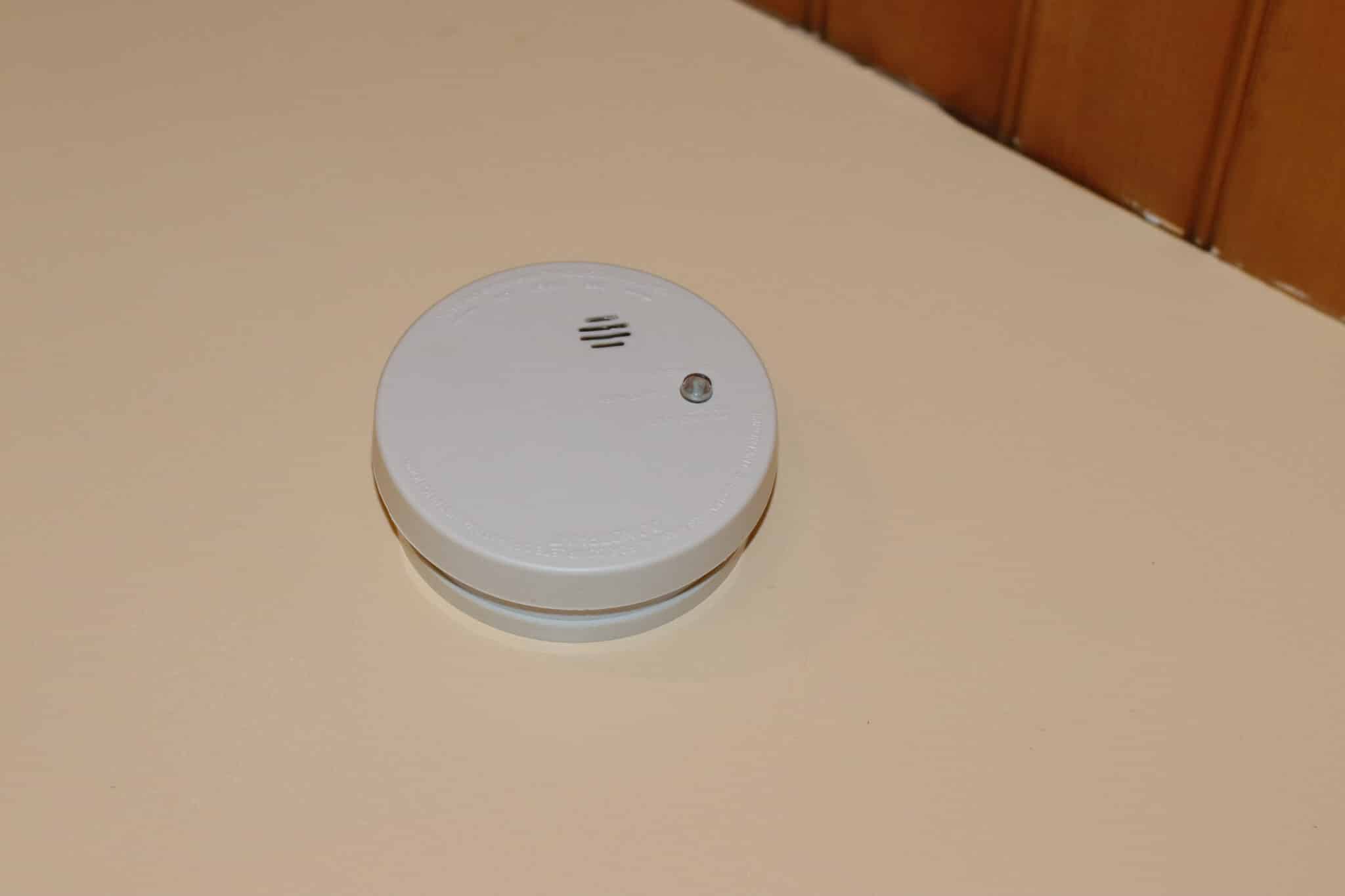Ensuring the safety of your home in Harrisburg, PA, includes being vigilant about the invisible dangers, such as carbon monoxide. This colorless, odorless gas can pose significant health risks without warning, making carbon monoxide detection a critical aspect of home safety. Residents in areas like Lancaster, PA, and Harrisburg have access to a variety of solutions to protect their households. It’s essential to understand the importance of selecting the right carbon monoxide detectors, installing them properly, and maintaining them regularly.
When it comes to carbon monoxide detection, not all devices are created equal. Homeowners should seek detectors that meet the latest safety standards and are capable of providing accurate readings. Knowing what features to look for and where to place these detectors in your home can make all the difference. This ensures that you are promptly alerted to any dangers, allowing you to take immediate action to safeguard your family.
Installation is another key factor in carbon monoxide detection. Proper placement is crucial, as it directly impacts the detector’s effectiveness. Experts recommend installing carbon monoxide detectors on every level of your home, including the basement, and near sleeping areas. By following these guidelines, Harrisburg residents can enhance their protection against this silent threat.
Finally, maintaining your carbon monoxide detectors is vital for ongoing home safety. Regular testing and timely battery replacements are simple yet effective steps to ensure your detectors are always operational. For families living in Harrisburg, PA, and surrounding areas, staying informed about carbon monoxide detection can provide peace of mind, knowing that they are taking proactive steps to protect their loved ones.
The Importance of Carbon Monoxide Detection in Harrisburg
Understanding the importance of carbon monoxide detection in Harrisburg homes cannot be overstated. With the right detectors in place, residents can significantly reduce the risk of carbon monoxide poisoning. These devices work tirelessly to monitor the air, quickly alerting families to the presence of this dangerous gas. It’s a silent guardian against a silent threat, providing peace of mind for homeowners.
Selecting the best carbon monoxide detector involves looking for features that ensure reliability and accuracy. Look for models that are certified by recognized safety standards. These detectors should also have a battery backup to ensure they continue working during power outages, a common scenario during storms in Lancaster, PA. Features like digital displays can also offer valuable information about carbon monoxide levels in real-time.
Installing carbon monoxide detectors correctly plays a crucial role in maximizing their effectiveness. They should be placed at least five feet above the ground or on the ceiling, as carbon monoxide mixes with air. Avoid placing detectors near windows or doors where drafts might interfere with their operation. This strategic placement ensures that the detectors can perform their job without any hindrances, keeping families safe.
Maintenance is the final, yet ongoing, step in ensuring the effectiveness of carbon monoxide detectors. Testing them monthly by pressing the test button ensures they are in working order. Batteries should be replaced at least once a year, or as recommended by the manufacturer. Remember, detectors have a finite lifespan, usually between five to seven years, after which they should be replaced. This routine care keeps the detectors ready to protect your home at all times.

Types of Carbon Monoxide Detectors for Your Home
When exploring carbon monoxide detection for your home, it’s important to know there are several types available. Each type offers unique features designed to meet different needs and preferences. For instance, battery-operated detectors provide ease of installation and work even during power outages, a common concern in Harrisburg, PA. Hardwired models, on the other hand, connect directly to your home’s electrical system and often include a battery backup for added reliability.
Smart carbon monoxide detectors are gaining popularity for their advanced features and connectivity. These devices can send alerts directly to your smartphone, ensuring you’re informed no matter where you are. This is especially useful for homeowners in Lancaster, PA, who might spend time away from their property. With smart detectors, peace of mind comes from knowing you’ll be promptly alerted to any issues.
Dual-function detectors offer another layer of protection by combining smoke and carbon monoxide detection into a single unit. This simplifies installation and maintenance, as you only need to manage one device instead of two. Dual-function detectors are ideal for ensuring comprehensive safety coverage throughout your home, making them a practical choice for many families.
Choosing the right carbon monoxide detector involves considering your specific needs, the layout of your home, and your lifestyle. Whether you opt for a basic battery-operated model, a hardwired version, a smart detector, or a dual-function unit, ensuring you have effective carbon monoxide detection in place is crucial. By selecting the appropriate type and following proper installation and maintenance practices, you can safeguard your home and loved ones against the dangers of carbon monoxide.
Installation Tips for Maximum Protection
After choosing the right carbon monoxide detector, the next crucial step is installation for ensuring your Harrisburg home is protected. It’s important to place detectors in key locations, including every bedroom, living area, and near any potential source of carbon monoxide. This strategic placement ensures that the alarm will wake you, providing crucial time to react, especially during the night. Remember, carbon monoxide can spread rapidly, making it vital to cover all areas of your home.
In addition to bedroom and living area installations, consider placing detectors near the garage and kitchen in your Lancaster home. These areas are common sources of carbon monoxide due to vehicles and gas-powered appliances. However, keep detectors at least 15 feet away from fuel-burning appliances to avoid false alarms. This careful positioning helps ensure that your detectors provide accurate alerts, enhancing your family’s safety.
For homes with multiple floors, it’s essential to install a carbon monoxide detector on each level, including the basement and attic if they are used frequently. This ensures that no matter where in the home you are, you’ll be within earshot of an alarm if it goes off. It’s a simple step that significantly boosts your protection against carbon monoxide poisoning. Keeping your family safe involves thinking about the flow of your home and ensuring no area is left unprotected.
Finally, testing your carbon monoxide detectors monthly is a key part of maintaining their effectiveness. Use the test button to ensure they are working correctly and replace batteries annually or as needed. This routine check-up can be the difference between a detector that saves lives and one that fails when needed most. By regularly maintaining your detectors, you ensure they remain vigilant guardians against carbon monoxide in your home.
Integrating Carbon Monoxide Detection with Home Safety Systems
Integrating carbon monoxide detection with your home safety system elevates the protection level for everyone inside. By connecting detectors to the broader system, Harrisburg residents ensure a coordinated response in the event of carbon monoxide detection. This setup can trigger alarms throughout the home, making it impossible to miss an alert. It can also notify emergency services automatically, speeding up the response time during critical situations.
Smart technology has made it easier to monitor your home’s safety from anywhere. For those in Lancaster, PA, adding carbon monoxide detectors to a smart home system allows for real-time updates on their smartphones. This means you can check the status of your detectors and receive alerts even when you’re away. It provides an added layer of reassurance, knowing that you’re always in the loop.
Maintaining connectivity between your carbon monoxide detectors and home safety system is straightforward. Regular checks ensure the system functions seamlessly, offering peace of mind. It’s a simple yet effective way to make sure that every part of your safety network is operational. This vigilance helps in preventing any lapses in protection, keeping your home secure against potential carbon monoxide exposure.
Finally, embracing the integration of carbon monoxide detection into your home safety system represents a smart move for homeowners. It not only enhances safety but also adds value to your property. With the advancements in technology, it’s become more accessible and efficient to safeguard your home in this manner. This integration ensures that Harrisburg and Lancaster, PA, residents can sleep soundly, knowing their homes are well-protected against the silent threat of carbon monoxide.
Maintenance and Testing: Keeping Your Detectors Reliable
Maintaining your carbon monoxide detectors is as crucial as having them installed in your Harrisburg home. A simple yet effective way to ensure they are always ready to protect your family is by conducting regular tests. Most manufacturers recommend testing the detectors monthly by pressing the test button. This quick check confirms the alarm is loud enough and the unit functions properly.
Replacing the batteries of your detectors annually, or as soon as you hear the low-battery warning, is another key step. For homes in Lancaster, PA, where power outages can occur, having a detector with a fresh battery can be lifesaving. It’s important to note that even detectors plugged into home electrical systems need their backup batteries replaced. This ensures uninterrupted carbon monoxide detection, especially during storms when the risk of CO buildup can increase.
Over time, carbon monoxide detectors lose their sensitivity and effectiveness, making timely replacement essential. The lifespan of most detectors ranges between five to seven years. Homeowners should mark the purchase or installation date on the unit itself and keep track of when it’s time for a replacement. This proactive approach keeps your home’s carbon monoxide detection system up to date and effective.
Lastly, keeping the detectors clean from dust and debris helps maintain their sensitivity. Use a soft brush or a vacuum cleaner attachment to gently clean the unit’s exterior. This prevents false alarms and ensures the detector can accurately monitor carbon monoxide levels in your home. By following these maintenance and testing tips, you can trust your carbon monoxide detection system to function reliably, safeguarding your loved ones.

Recognizing the Signs of Carbon Monoxide Poisoning
Recognizing the signs of carbon monoxide poisoning is crucial for anyone relying on carbon monoxide detection in their home. Early symptoms often mimic those of the flu, including headaches, dizziness, nausea, and fatigue, but without the fever. This similarity can easily lead to misdiagnosis, making awareness and quick action essential. Residents in Harrisburg, PA, should be particularly vigilant during the colder months when homes are sealed tight to keep the warmth in.
Confusion and drowsiness are advanced symptoms of carbon monoxide poisoning, indicating higher levels of exposure. If these symptoms appear, it’s imperative to get fresh air immediately and seek medical attention. Carbon monoxide detection plays a vital role here, as an early warning can prevent exposure from reaching a dangerous level. It’s a safeguard that every home in Lancaster, PA, and beyond should have in place.
Maintaining your carbon monoxide detectors ensures they function correctly, providing an early warning that could save lives. Regular testing and battery checks are simple yet effective measures every homeowner can take. This proactive approach to carbon monoxide detection allows for peace of mind, knowing your family is protected against this invisible threat. It’s a critical component of home safety that should never be overlooked.
Finally, educating your family about the dangers of carbon monoxide and the importance of evacuation plans is essential. Knowing what to do when a detector goes off can make all the difference in a crisis. This education, combined with effective carbon monoxide detection, creates a comprehensive defense against the silent killer. Together, these strategies form a robust shield, keeping homes safe from the risks of carbon monoxide poisoning.
Legal Requirements for Carbon Monoxide Detectors in Harrisburg
Understanding the legal requirements for carbon monoxide detection in Harrisburg is crucial for homeowners. The state mandates that carbon monoxide detectors must be installed in all residential properties with fuel-burning appliances or attached garages. This law aims to enhance the safety of homes by ensuring early warning of carbon monoxide presence. Compliance not only protects families but also aligns with state safety regulations, promoting a safer living environment.
In Lancaster, PA, similar rules apply, reflecting a widespread recognition of the risks associated with carbon monoxide. Property owners are responsible for installing detectors in strategic locations within their homes. By adhering to these requirements, residents significantly reduce the risk of carbon monoxide poisoning. It’s a simple step that has a profound impact on the overall safety of a household.
Maintenance of these detectors is also governed by legal guidelines, emphasizing the importance of functionality. Homeowners must regularly test and replace batteries to ensure detectors remain in working order. This proactive approach is essential for continuous protection against carbon monoxide. Keeping detectors operational not only meets legal standards but also provides peace of mind.
Finally, the implementation of these laws underscores the commitment of Harrisburg and Lancaster to resident safety. By mandating carbon monoxide detection in homes, they highlight the invisible dangers of this gas. Adhering to these regulations is a key aspect of responsible homeownership. It ensures that families are safeguarded against potential threats, maintaining a secure living environment.
Choosing the Right Carbon Monoxide Detector for Your Home
Choosing the right carbon monoxide detector for your home in Harrisburg, PA, involves understanding your living space and lifestyle. Consider detectors with features that meet your specific needs, such as digital displays for real-time CO levels or voice alerts for added clarity. Battery-operated models offer flexibility and continue to operate during power outages, a common concern in areas like Lancaster, PA. It’s essential to select a detector that provides reliable protection and fits seamlessly into your home environment.
Installation locations can significantly impact the effectiveness of carbon monoxide detection. Detectors should be placed near sleeping areas to ensure alarms can be heard during the night. Additionally, installing them on every level of your home covers more ground, enhancing overall safety. By strategically placing detectors, you ensure comprehensive coverage against carbon monoxide threats.
Maintenance plays a crucial role in the reliability of your carbon monoxide detection system. Regular testing and battery replacement are key to ensuring your detectors are always operational. Marking the calendar for routine checks can help maintain their functionality. This simple habit can make a significant difference in the safety of your home.
Finally, understanding the features and specifications of different carbon monoxide detectors allows for informed decision-making. Look for units that are certified by recognized safety standards to ensure quality and reliability. Choosing the right detector not only complies with safety regulations in Harrisburg and Lancaster but also provides peace of mind. With the right approach, you can effectively safeguard your home against the dangers of carbon monoxide.
Frequently Asked Questions
What are signs of carbon monoxide exposure?
Signs of carbon monoxide exposure can be subtle yet dangerous. Early symptoms include headache, dizziness, weakness, and nausea. As exposure increases, symptoms can escalate to confusion, blurred vision, and loss of consciousness. Recognizing these signs early is crucial for safety and requires immediate action.
How do carbon monoxide detectors work?
Carbon monoxide detectors monitor the air for this invisible, odorless gas. They sound an alarm when levels become unsafe, alerting residents to danger. This early warning gives people time to evacuate and seek fresh air. Regular testing and battery checks ensure they work properly, keeping homes safe.
What is the best Carbon Monoxide Detection system?
The best carbon monoxide detection system combines reliability, sensitivity, and user-friendly features. Look for models with a long lifespan, digital displays, and connectivity to home security systems. Regular maintenance and placement in key areas enhance their effectiveness. Choosing a system from a trusted brand ensures your home stays safe from this invisible threat.
How often should detectors be replaced?
Detectors need replacing every 7 to 10 years, depending on the model. Checking the manufacturer’s guidelines helps determine the exact timeline. This ensures your carbon monoxide detection remains effective and reliable. Regular updates keep your home safe from this silent danger.
Can Carbon Monoxide Detection save lives?
Absolutely, carbon monoxide detection can be a lifesaver. By alerting homeowners to the presence of this dangerous gas, these detectors provide a crucial window for evacuation and action. Timely alerts allow families to leave the affected area before symptoms worsen. Ultimately, installing and maintaining these detectors ensures a safer home environment, protecting lives against the silent threat of carbon monoxide poisoning.






